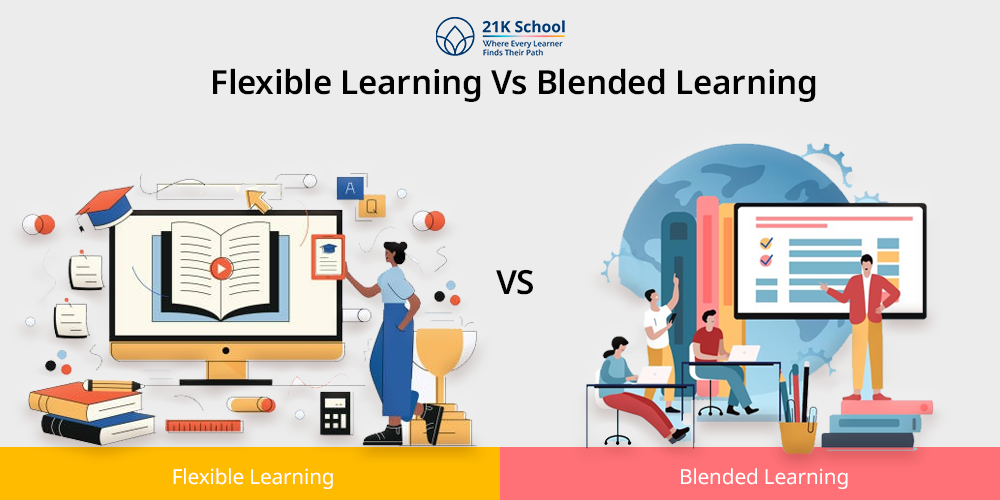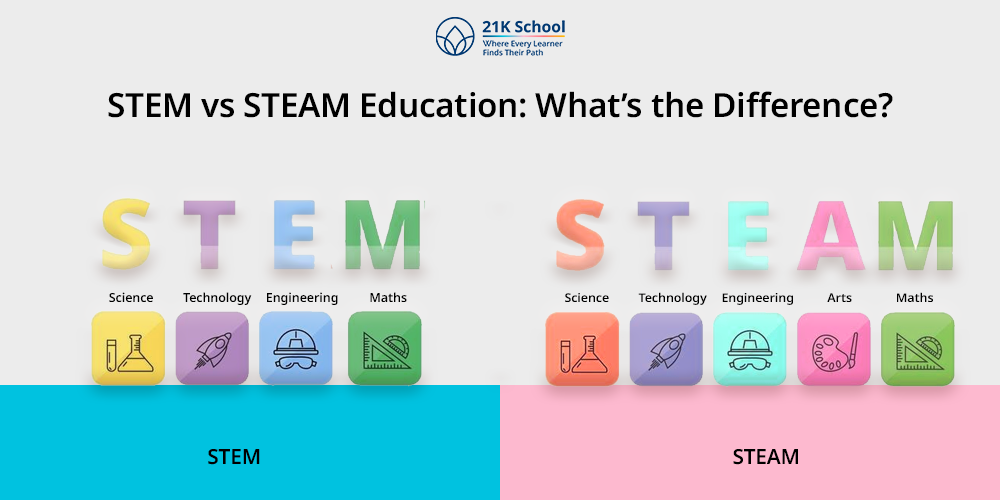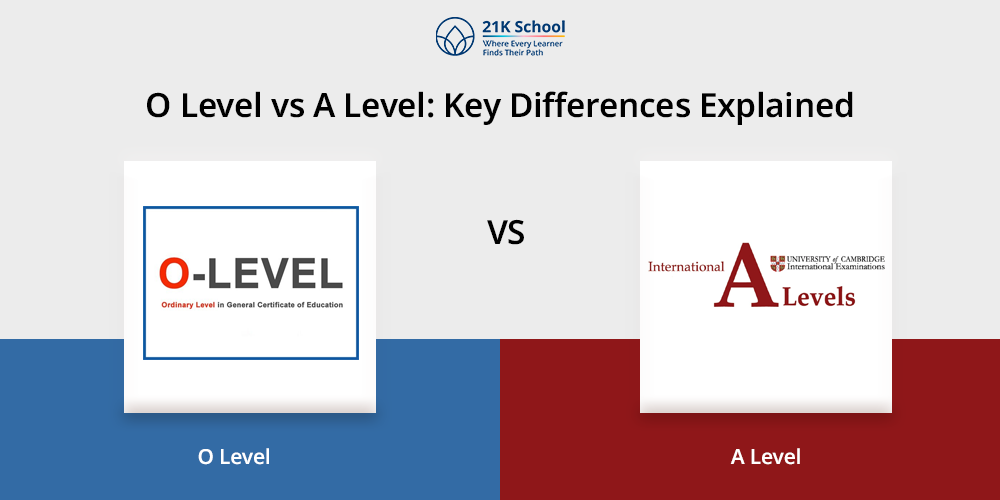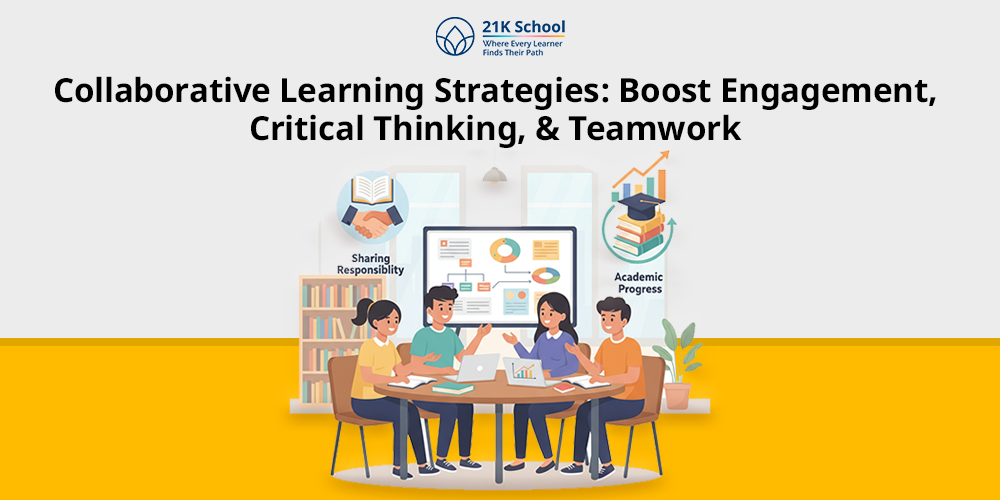
Do you know how blended learning is distinct from flexible learning ?
Flexible learning and blended learning are two educational approaches of student-centred education . With the contribution of technology in education , education has become more determinant, through which learners can study at their convenience.
Blended learning and flexible learning are both different aspects of education ; however, many people consider them the same due to their shared features.
Blended learning combines both online and traditional schooling methods to provide students with flexible learning opportunities. On the other hand, flexible learning is a teaching method in which students have the autonomy to learn.
This means students can decide when, where, how, and what they will learn. Both aspects use a remote learning environment, along with some parts of the physical classroom.
Contents
What is Flexible Learning?
Flexible learning is an educational approach that focuses on providing autonomy to students. Flexible learning sometimes denotes distance learning or open learning as they are also a form of flexible learning.
This learning method focuses on students’ needs and for accessibility, learning style, capacity and variety, as every student has their own learning experience. Through flexible learning, students can decide when, where, how, and what they will learn.
Through flexible learning, students can attend classes in an online mode with the help of e-learning platforms which allows them to attend classes from any location.
Flexible education is a flexible approach that can be provided across various types, such as in the classroom, at home, a hybrid model or a work-based program.
Flexible learning allows students to collaborate with others to develop social skills as well as enhance their potential to indulge in lifelong learning. Flexible learning is a self-directed learning approach that allows students to study on their own.
What is Blended Learning?
Blended learning is an educational method in which students can attend classes in both online and in-person classes. Blended learning combines in-person instruction with digital learning tools and resources, providing a customised and adaptable learning experience.
Blended learning is sometimes also known as hybrid learning because both have the same feature of combining online classes with in-class interaction.
With the help of virtual learning platforms students can attend classes in remote-based settings along with face-to-face class interaction. This flexible approach allows students to learn according to their pace and learning style.
Blended learning uses both synchronous and asynchronous learning methods that focus on self-paced learning. Blended learning provides students with a flexible approach to education, which enhances students’ knowledge retention and maximises their educational experience.
Difference Between Flexible Learning and Blended Learning
Flexible Learning and Blended learning are both different concepts, but many people consider them the same. Both aspects share a common aspect of flexibility and a remote learning opportunity.
Flexible learning is an educational approach that focuses on providing autonomy to children, which allows them to study as per their convenience.
On the other hand, blended learning is an educational approach that combines offline classes along with online classes. Here is a detailed comparison between flexible learning and blended learning.
| Aspect | Flexible Learning | Blended Learning |
| Definition | Flexible learning is an educational approach that provides autonomy to students. Through this, students can decide when, where, how, and what they will learn. | Blended learning is an educational approach that combines in-person instruction with digital learning tools and resources, which provides a customised learning experience. |
| Structure | Flexible learning has a less structured learning environment that allows students to learn on their own according to their convenience. | Blended learning also provides a flexible education but has a structured learning environment, which combines online and offline classes. |
| Focus | Flexible education gives control to students in that students decide to learn according to their own pace and learning style. | Blended learning combines offline and online classes into the same aspect. This allows students to indulge in both remote and in-person instruction. |
| Benefit | Flexible learning provides autonomy to students, which focuses on self-paced learning, and provides them with personalised learning opportunities. | Blended learning enhances students’ engagement and provides them with equal learning opportunities. |
| Example | An example of flexible learning is an online course with the option of in-person review sessions or a self-paced course that offers tutoring and online resources. | The example of blended learning is online lectures may be followed by in-person lab sessions and group discussions. |
Features of Blended Learning
Blended learning is a flexible approach to education that incorporates online learning with face-to-face interaction. This flexibility promotes personalised learning, and dynamic education enables students to learn at their convenience.
The incorporation of technology in education makes it more engaging and enhances communication skills . Here are the features of blended learning.
1. Promotes Collaboration
Blended learning promotes collaboration skills among students. Students are encouraged to collaborate in blended learning environments, which is essential for the development of interpersonal skills.
Blended learning enhances these opportunities, incorporating online resources that promote collaboration outside of the traditional classroom . Blended learning uses online platforms and digital resources, which allow for real-time communication and collaboration.
2. Students Participation
Blended learning encourages students’ participation through interactive class sessions. This approach of learning method shifts the focus from a teacher-centred method to student-centred method by involving students as active participants in their educational process.
Blended learning provides interactive online classes, group discussions, online group projects, self-directed learning activities and peer-to-peer learning .
3. Digital Literacy Skills
Blended learning helps in enhancing digital literacy skills among students. Through blended learning, students learn how to use multimedia content, educational apps and Learning Management Systems.
Digital literacy skills are not only essential for academic success, but they also help students to prepare for the demands of the modern technological workplace. Digital literacy skills allow students to become proficient in using technology and its technical aspects.
4. Equal Accessibility
One of the greatest advantages of blended learning is the possibility of equal access to educational opportunities and resources.
Through blended learning, students can attend classes from any location, irrespective of any challenges or hindrances, which also helps in promoting an inclusive learning environment. This allows every child to access quality education without any social or economic challenges.
5. Formative Assessment Method
Blended learning uses formative assessment tools to assess students’ performance. Formative assessment tools incorporate interactive assessments such as quizzes, polls, peer reviews, and reflective journals, which enhance student engagement .
This method provides quick feedback to teachers, enabling them to assess students based on their performance and feedback. With the use of formative assessment tools, teachers can adjust their teaching style and objectives.
Features of Flexible Learning
Flexible learning provides autonomy to students and enables them to have control over their studies. Flexible learning allows students to study as per their own comfortability and convenience, which enables them to decide what, when, and where to learn.
This flexibility allows students to adapt to different learning styles. This provides students with an opportunity to thrive in the dynamic learning environment. The following are the features of flexible learning.
1. Equal Accessibility
Flexible learning promotes equal access to education to every individual, enabling them to actively participate in the teaching and learning process without any hindrances.
Online platforms such as interactive modules, e-books, and video lectures are used in flexible learning, which enable students to interact with others regardless of any location.
This breaks the gap between traditional learning and provides students with easy access to education without any hindrances.
2. Personalised Learning
Flexible learning includes personalised learning , which adjusts educational experiences to each student’s particular needs, interests and learning preferences.
This approach allows students to study as per their own comfort level and learning pace, and promotes problem-solving skills . Customisation of education enables students to become more motivated and involved in their education.
3. Flexible Schedule
Flexible learning has a flexible schedule that provides students the freedom to choose when and how often to participate in their studies in order to accommodate other responsibilities such as work, family and personal interests.
This flexibility provides a more balanced lifestyle that reduces exam stress and enables students to focus on their studies at their most productive and focused moments.
4. Easy Assessment
In a flexible learning environment, assessments are not only limited to traditional exams but may also be conducted in other forms such as projects, quizzes, peer reviews and self-assessments.
This approach provides quick feedback, which enables students to focus on their areas of weakness and modify their learning approaches accordingly. With this method, the stress of traditional exams is reduced and a more formative evaluation process is promoted.
5. Lifelong Learning
Flexible learning promotes lifelong learning and enables students to indulge in self-directed learning. The flexible learning approach allows students to try out new knowledge and skills at any stage of their professional or personal development.
This can involve formal education , online courses and workshops for self-directed study. This helps in developing a growth mindset in education and enhancing students’ engagement towards learning.
Examples of Blended Learning
Blended learning comprises every aspect of online elements that makes education more engaging and equitable. Blended learning comprises video lectures, podcasts, image learning and so on. This enhances the learning experience of students.
In this learning approach, traditional aspects are combined with online instruction, which makes education cost-efficient and simpler. The following are the mentioned examples of blended learning.
1. Online Driver Model
Online driver model uses online learning elements that make education simpler. Under this model, most of the course material will be delivered online.
Students engage with the resources at their own pace using both synchronous and asynchronous learning methods. This method offers flexibility and accessibility; it is particularly helpful for adult learners and those who reside in remote areas.
2. A La Carte Model
This model provides options of online resources to students. Students can choose from a variety of online courses under this model, but they still attend regular classes.
In order to accommodate a range of learning preferences, this method allows for individualised learning experiences by letting students focus on subjects that interest them or want to focus on the subjects.
3. Face-to-Face Driver Model
This model is a classic model of the teaching and learning process. In this model, the traditional classroom remains the primary teaching model but incorporates technology to enhance the learning experience.
The teachers provide direct instruction while using online resources to reinforce and support the content covered in class. For students who benefit from having in-person conversations with teachers, this method works well.
4. Seminar
Seminars are an effective example of a blended learning approach. Seminar helps in promoting students’ participation through group projects, presentations and discussions.
In order to enhance learning outcomes and encourage student collaboration skills and critical thinking skills , they use online resources. This also helps students to get a deeper understanding of the knowledge.
5. Webinar
Webinars are live or recorded online seminars that are conducted over the internet, enabling participants and instructors to communicate in real time.
This method incorporates formative assessment tools, which is helpful for disseminating content on particular subjects, making them accessible to a larger audience. Continuing education and professional development benefit greatly from this format.
Examples of Flexible Learning
Flexible learning provides a tailored method of education in which students have autonomy. Flexible learning provides control of education to the children, through which they can decide how and when to study.
This approach combines online learning materials in order to make education equally accessible and simpler. However, many people consider flexible learning as micro learning, self-paced learning, and personalised learning.
Here are some examples of flexible learning:
1. Micro Learning
Micro-Learning is an educational approach of flexible learning in which complex topics are broken down into small, understandable concepts.
This allows students to grasp difficult concepts more easily through smaller chunks.
Microlearning enhances students’ retention and makes learning simpler. This flexible approach allows students to actively participate in the teaching and learning process without any hindrances.
2. Resource-Based Learning
Resource-based learning is a method of acquiring resources through useful methods. Resource-based learning highlights the benefits of utilising a variety of resources to aid in the learning process.
Textbooks, academic journals, online databases, and multimedia content are used as resources to motivate students to take an active role in their education.
3. Inquiry-Based Learning
Inquiry-based learning is a student-centred approach that encourages students to investigate and ask questions about subjects that interest them.
This method focuses on active learning rather than passive learning, which fosters critical thinking skills and curiosity among students.
This method allows students to develop social skills through inquiry-based learning, and students become curious to explore all the limitations.
4. Flipped Classroom
Flipped classroom is another flexible learning approach that inverts the roles of in-class and out-of-class learning model to transform the conventional educational system.
In this method, group projects, interactive classes and discussions are conducted in class and other resources are usually given in the form of video lectures at home.
The flipped learning model gives students the opportunity to interact meaningfully with both teachers and peers, which enhances active learning.
5. Personalised Learning
Personalised learning is another example of customised education that tailors the curriculum to each student’s unique needs, interests and preferences.
As every student has their own learning style and method of acquiring knowledge, personalised learning allows them to study as per their convenience.
Personalised learning also includes adaptive learning tools that adjust content based on student performance and customised learning plans.
Final Thoughts
Although both blended learning and flexible learning use technology and adaptability to improve educational experiences, they are two different strategies.
Flexible learning places an emphasis on student autonomy by giving them the freedom to decide what, how, when and where they study.
By combining online and in-person instruction, blended learning, on the other hand, creates a hybrid environment that combines digital resources with traditional classroom interaction.
By being aware of these variations, educators and students can choose the best strategy leading to a more individualised and interesting learning environment.



